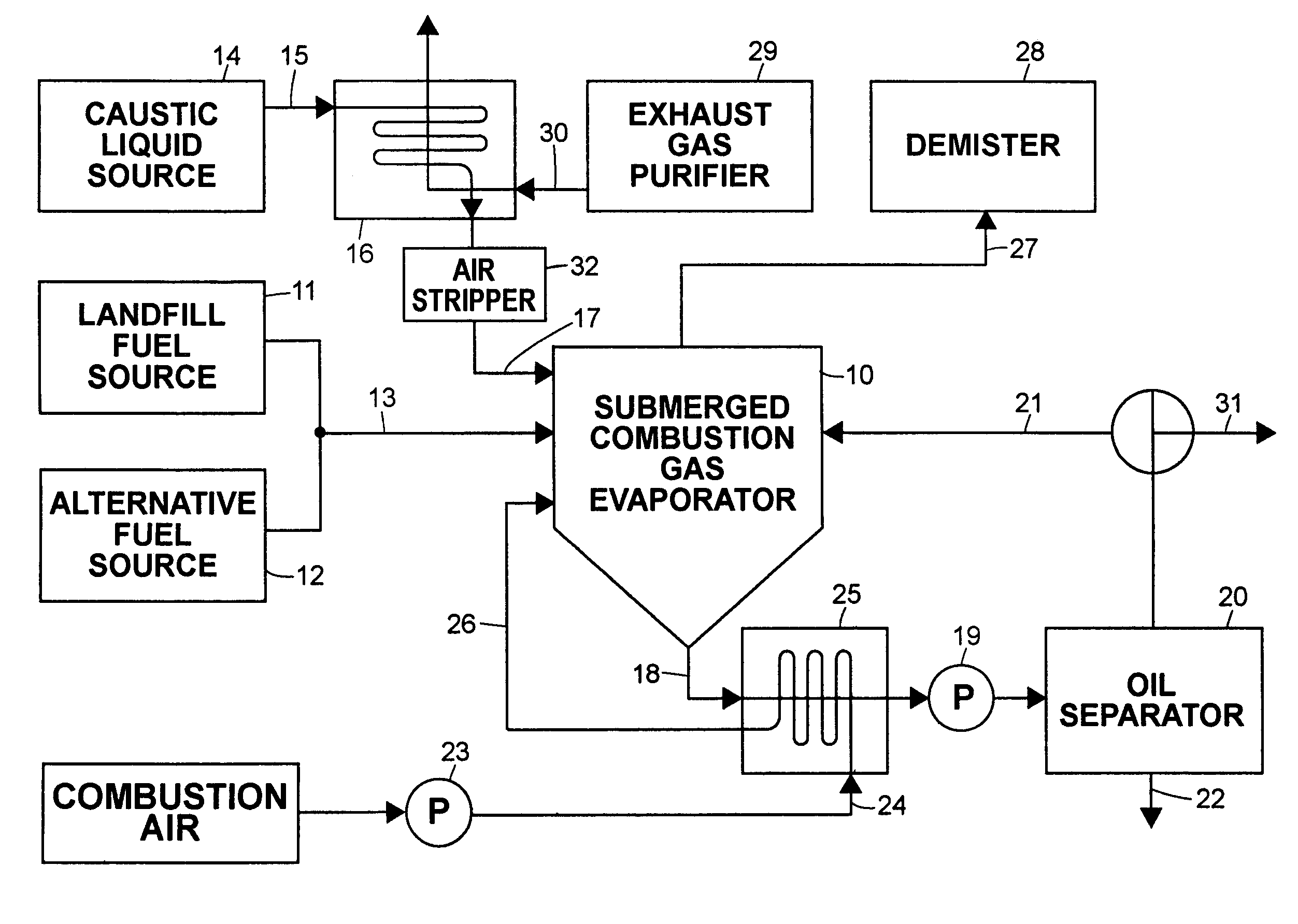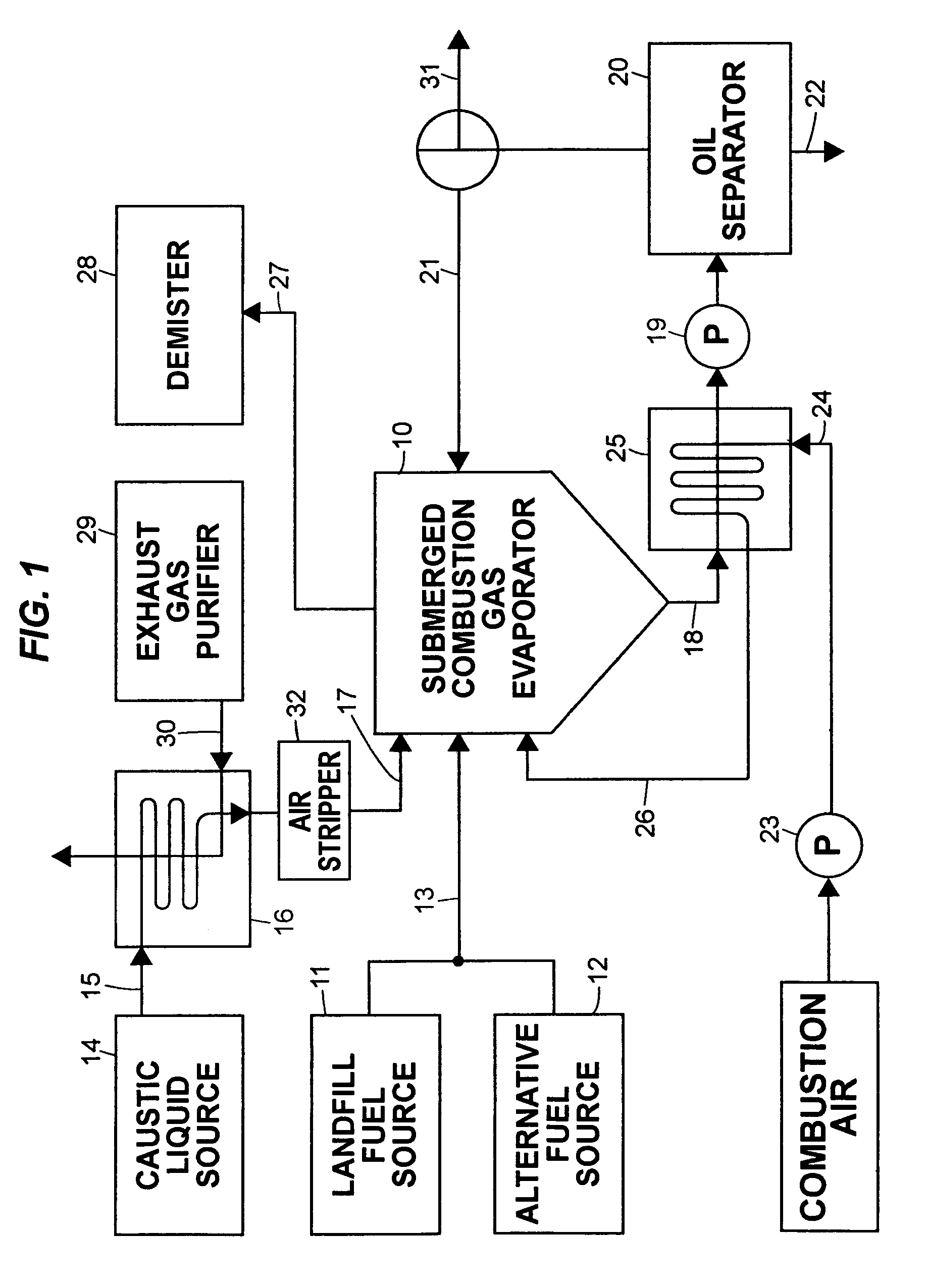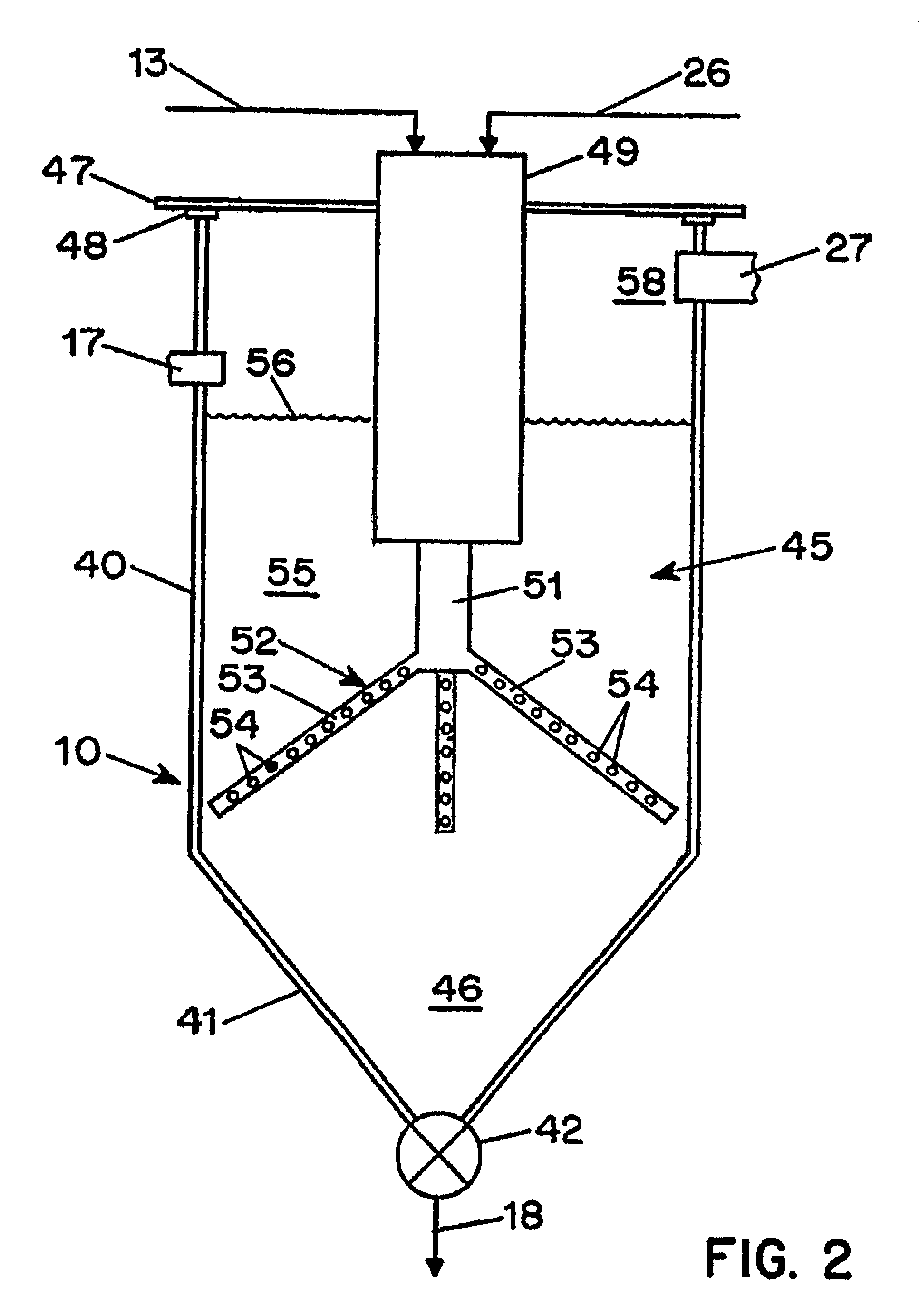Treatment of spent caustic refinery effluents
a technology for caustic effluent and refinery effluent, which is applied in the direction of combination process, drying solid materials, alkali metal halide purification, etc., can solve the problems of insufficient concentration and combustion of submerged combustion methods, and the effluents have been considered essentially useless, so as to prevent the dissipation of carbon dioxide into the atmosphere
- Summary
- Abstract
- Description
- Claims
- Application Information
AI Technical Summary
Benefits of technology
Problems solved by technology
Method used
Image
Examples
Embodiment Construction
[0022]In the representative arrangement for carrying out the process of the invention schematically illustrated in FIG. 1, a submerged combustion gas evaporator 10, which is described in more detail in connection with FIG. 2, receives combustible gas from a landfill or other biogas source 11 or from an alternative fuel source 12 providing natural gas, propane, butane or the like or providing a liquid fuel such as waste petroleum oils or the like or from both. The evaporator 10 may be operated on a batch, batch-continuous, or continuous basis and the fuel gas from the sources 11 and 12 may be collected and stored for use or be supplied continuously in accordance with the needs of the evaporator. In one embodiment the system is located closely adjacent to a landfill from which landfill gases are conveniently available, but, if desired, landfill gases may be piped or transported from one or more landfills at remote locations to processing stations adjacent to a source of caustic efflue...
PUM
| Property | Measurement | Unit |
|---|---|---|
| Temperature | aaaaa | aaaaa |
| Temperature | aaaaa | aaaaa |
| Length | aaaaa | aaaaa |
Abstract
Description
Claims
Application Information
 Login to View More
Login to View More - R&D
- Intellectual Property
- Life Sciences
- Materials
- Tech Scout
- Unparalleled Data Quality
- Higher Quality Content
- 60% Fewer Hallucinations
Browse by: Latest US Patents, China's latest patents, Technical Efficacy Thesaurus, Application Domain, Technology Topic, Popular Technical Reports.
© 2025 PatSnap. All rights reserved.Legal|Privacy policy|Modern Slavery Act Transparency Statement|Sitemap|About US| Contact US: help@patsnap.com



